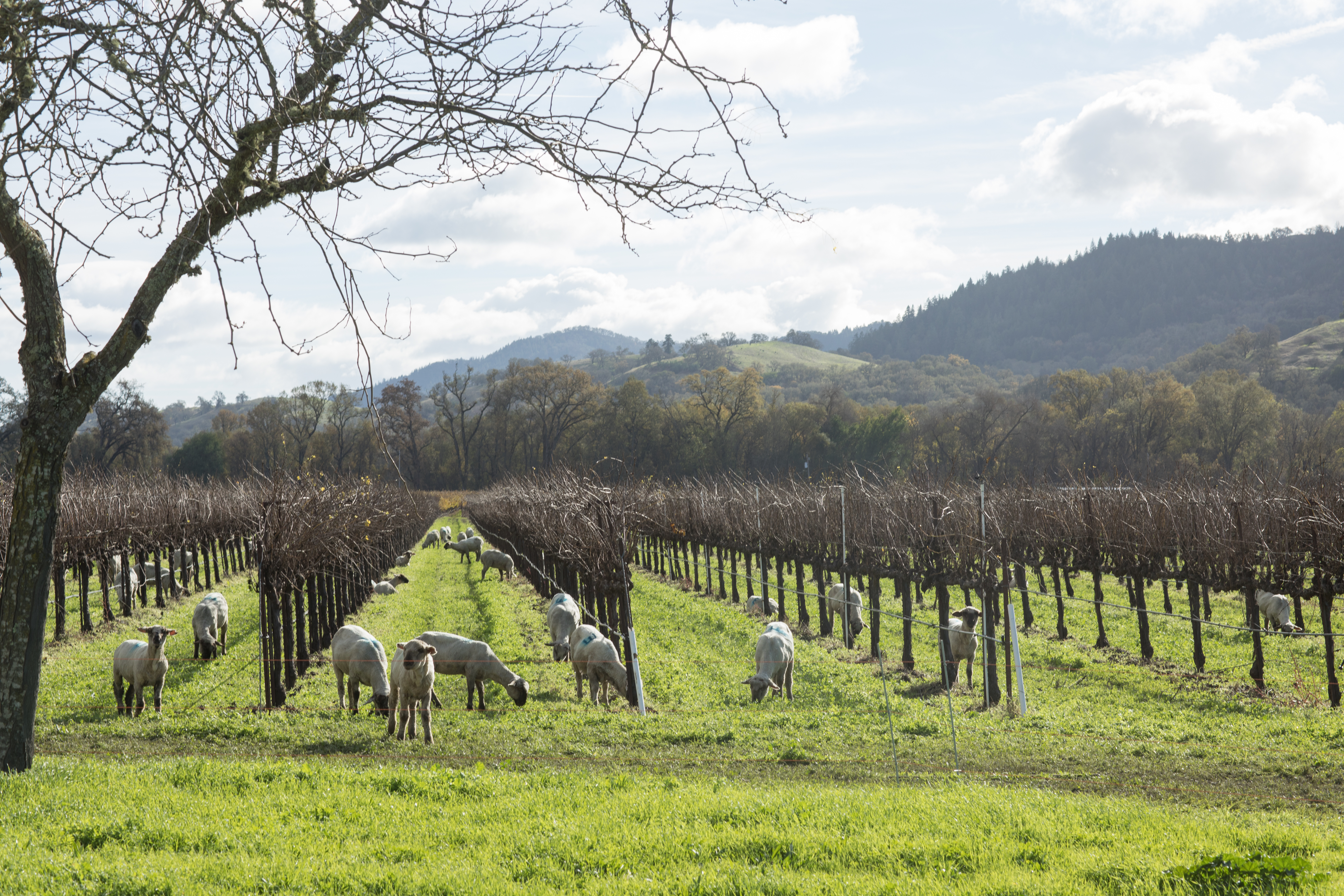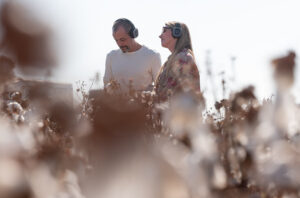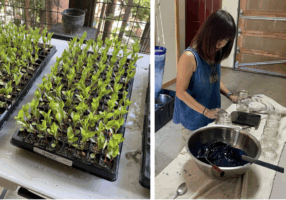Integrated Crop & Livestock Systems and Fuel Load Reduction
Grazing fiber-producing animals in cropland systems can reduce and eliminate the cost and need for herbicides and synthetic fertilization, provide a less expensive option than mowing all while building soil organic matter and effectively cycling nutrients within our farming ecosystems. When the soil’s organic carbon percentages are increased the soil’s ability to hold water is increased, which provides landscapes a critical buffer to the impacts of drought. Increased water holding also lessens the need for increased irrigation and reduces agricultural use of aquifers and surface water.
Reducing accumulated fuel load from areas that co-evolved with fire can be accomplished by the management of grazing animals into our rangeland and forested systems. Wildland-urban interface zones are areas where fire has been suppressed for decades and in some cases over a century, posing risks that are now being realized through catastrophic fire events. However fuel load can be managed through human shepherded flocks and herds, and this opportunity for prescriptive herbivory has and continues to inspire a new generation of contract grazers who are committed to landscape level restoration.
Learn how the work of animals and their human shepherds is enhancing biological diversity in our croplands and healthfully managing the fuel load. Witness how this work is providing a straightforward solution to complex challenges through case studies shared in our short film, Resilience in Practice, alongside research and policy updates from the field of agroecology.
Resilience in Practice: Reintegrating Animals into Cropping Systems
Building resilience in the face of catastrophic fire, drawing down atmospheric carbon while generating new jobs– the work to re-integrate animals into croplands is a powerful approach that meets many needs. Our community experiences these benefits firsthand while contributing to meeting global Climate goals: a recent report on low-risk pathways to limiting global temperature rise to 1.5C noted that “livestock practices that build agricultural resilience and strengthen rural communities is a critical component of a global climate solution.”
Resilience in Practice features the work of Kaos Sheep Outfit, Tablas Creek Vineyard, Kirabo Pastures, the Grazing School of the West, True Grass Farms, and the Gaudin Lab at UC Davis.
Grazing livestock in vineyards and forested pastures, as shown in Resilience in Practice, provides localized benefits like greater water holding capacity and higher yields. By raising livestock amongst trees, a practice known as silvopasture, we can realize a net negative climate impact: Project Drawdown has estimated that silvopasture can sequester 1.95 tons of carbon per acre per year in soil and biomass, creating a carbon sink of over 31 Gigatons globally if adoption is increased.
In our home communities, we can create working models of material culture, from clothing to home goods, that invests in agriculture that is integrated and even Climate Beneficial.
California’s most recently published Fourth Climate Change Assessment includes an aggregation of scientific studies that analyze the impacts and requirements for both adapting and solving for Climate Change. The science shows that “managing farms, ranches, and public lands to increase soil carbon can increase soil water- holding capacity and increase hydrologic benefits such as increased baseflows and aquifer recharge, reduced flooding and erosion, and reduced climate-related water deficits. Coincident improvements in forage and crop yields are also indicated, while simultaneously sequestering carbon, reducing atmospheric greenhouse gases and mitigating climate change”. (Flint et. al) (Photos by Paige Green, left, and Kalie Ilana Cassel-Feiss, below)
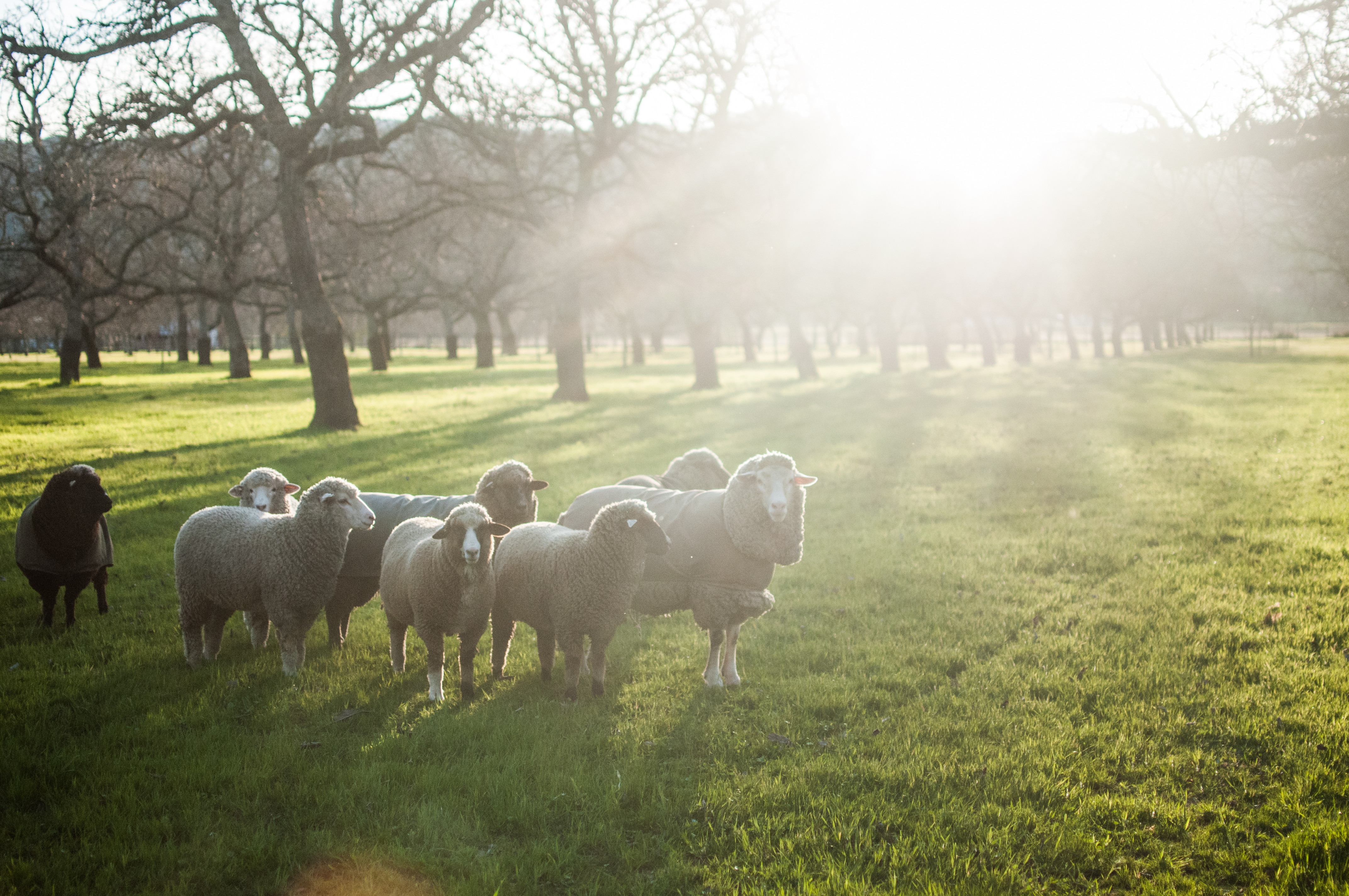
Fire is an ecological reality within the geography of the Northern California Fibershed, yet grazing offers a tool to mitigate the risk of catastrophic fire through the removal of biomass.
“This summer, we had the biggest fire that ever happened in California — having the animals graze here has made our farm much more resilient to fire” explains John and Carrie Ham of Kirabo Pastures in Resilience in Practice, as they walk across land touched by the 2017 Redwood Valley Fire. With less fuel to consume, fires burn slower and at lower temperatures. A natural tool for landscape management, this practice is also called prescribed herbivory and offers multiple benefits compared to alternative methods of removing vegetation. An overview of prescribed herbivory for fire management is available in this document, prepared for the Board of Forestry and Fire Protection by the Range Management Advisory Committee including Brittany Cole Bush, whose work is featured in Resilience in Practice.
To hear perspectives on grazing for fire management, listen to the panel discussion from the 2018 Wool Symposium.
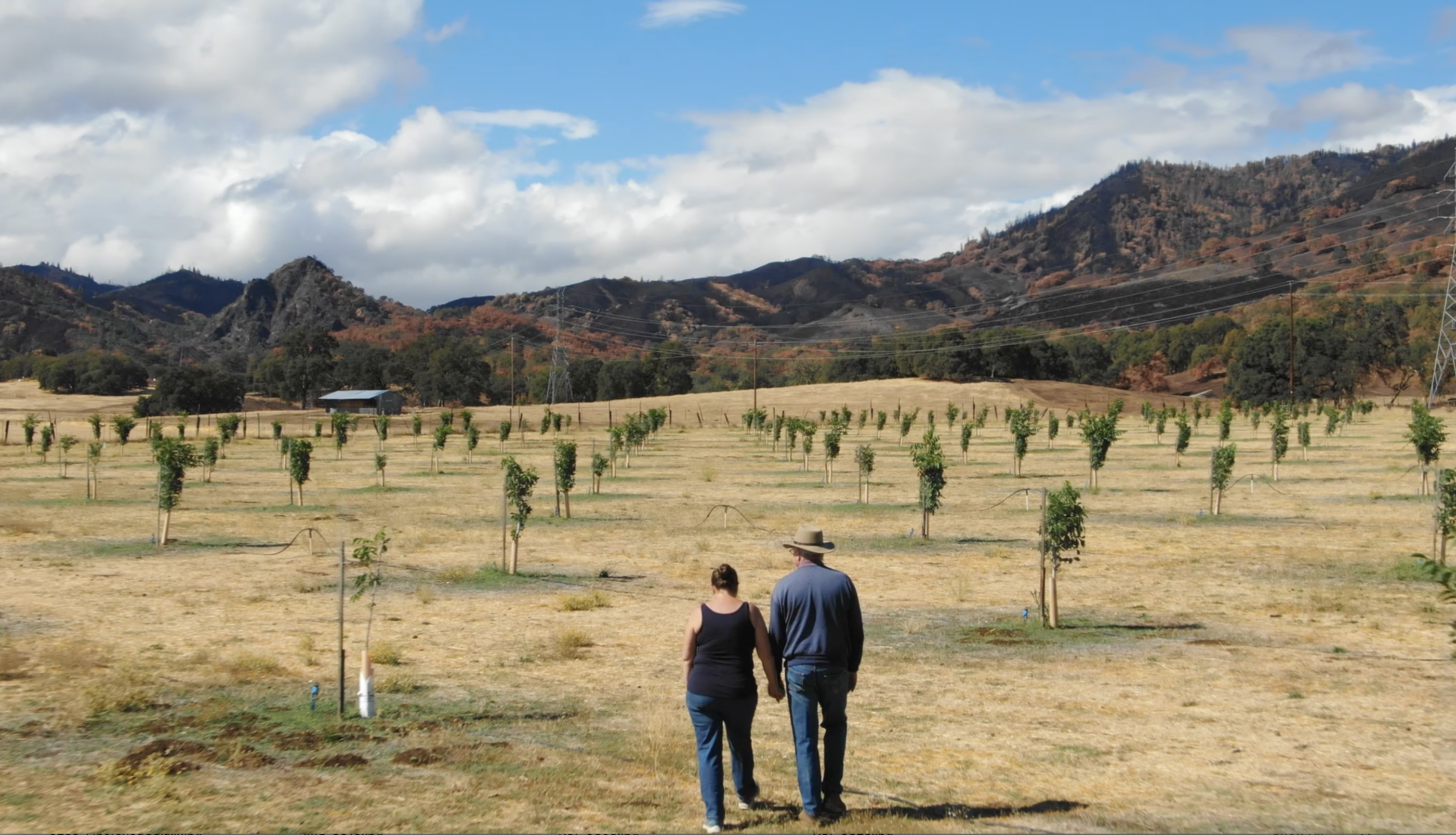
Pairing crops and livestock boosts economic resilience too, from cost-savings strategies to green job generation. “The benefit that we provide for landowners and land managers is bringing down their costs for mowing and managing their land as well,” said Jaime Irwin, co-owner of Kaos Sheep Outfit, a contract grazing operation based in Lake County, California.
Grazing School of the West presents a vision to expand this type of service by training the next generation of job-seekers as agrarians moving herds to manage for fire, carbon, and profitable local fiber and food production (Photos by Paige Green)

Is integration the key to resilience? The Gaudin Lab at UC Davis is studying several applications of agroecology in the Fibershed Producer community, from the impact of grazing sheep in vineyards to establishing a soil carbon baseline through our citizen science protocol. Dr. Amelie Gaudin, Assistant Professor in the Department of Plant Sciences, sees biodiversity as critical and is partnering with researchers to understand barriers to adoption.
Read more about Dr. Gaudin’s work in a recent feature in Scientia HERE.
For a synopsis on the beneficial agroecological outcomes of integrating sheep into vineyard systems, see this study by Brewer et al.
Hear an update on the Gaudin Lab research as shared at the 2018 Symposium: https://youtu.be/xZQ_MXKgZzQ
(Photos by Paige Green, above and below)
